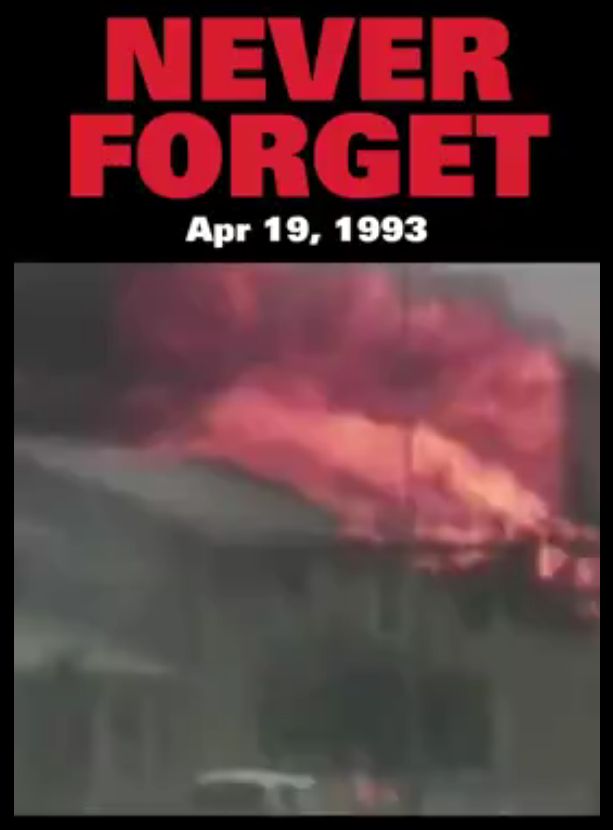WACO
150+ fully-armed ATF agents assaulted the Branch Davidian complex in Waco, TX, killing nearly everyone by gunshot or fire.
https://www.bitchute.com/video/g46IYRS5va2w
The ATF (Bureau of Alcohol, Tobacco, Firearms and Explosives) and FBI (Federal Bureau of Investigation) assault on the Branch Davidian compound in Waco, Texas, in 1993 remains one of the most controversial and tragic events in American law enforcement history. The raid, led by the ATF, was initially intended to serve a search warrant for illegal weapons and explosives. However, it quickly escalated into a deadly confrontation that culminated in a 51-day siege and the deaths of dozens of people, including David Koresh, the leader of the Branch Davidians.
The illegality surrounding the raid and subsequent events is a subject of intense scrutiny and debate. Critics argue that the ATF’s actions were based on faulty intelligence and that the use of force was excessive and unjustified. There are allegations of illegal weapons searches, violations of constitutional rights, and questionable tactics used during the raid.
The cover-up and conspiracy theories surrounding the Waco siege further fuel the controversy. Some believe that government agencies, including the ATF and FBI, engaged in a deliberate cover-up to conceal their mistakes and wrongdoing during the raid and siege. This includes allegations of tampering with evidence, withholding information from the public, and manipulating the media narrative to justify their actions.
The aftermath of the Waco siege led to significant changes in law enforcement tactics and procedures, particularly regarding the handling of high-risk situations involving armed groups or individuals. It also raised important questions about government accountability, transparency, and the balance between law enforcement responsibilities and respecting individual rights.
Overall, the Waco siege and its aftermath serve as a stark reminder of the complexities and challenges faced by law enforcement agencies when dealing with extremist groups, as well as the importance of thorough investigation, transparency, and adherence to legal and ethical standards in such operations.
The ATF (Bureau of Alcohol, Tobacco, Firearms and Explosives) and FBI (Federal Bureau of Investigation) assault on the Branch Davidian compound in Waco, Texas, in 1993 remains one of the most controversial and tragic events in American law enforcement history. The raid, led by the ATF, was initially intended to serve a search warrant for illegal weapons and explosives. However, it quickly escalated into a deadly confrontation that culminated in a 51-day siege and the deaths of dozens of people, including David Koresh, the leader of the Branch Davidians.
The illegality surrounding the raid and subsequent events is a subject of intense scrutiny and debate. Critics argue that the ATF’s actions were based on faulty intelligence and that the use of force was excessive and unjustified. There are allegations of illegal weapons searches, violations of constitutional rights, and questionable tactics used during the raid.
The cover-up and conspiracy theories surrounding the Waco siege further fuel the controversy. Some believe that government agencies, including the ATF and FBI, engaged in a deliberate cover-up to conceal their mistakes and wrongdoing during the raid and siege. This includes allegations of tampering with evidence, withholding information from the public, and manipulating the media narrative to justify their actions.
The aftermath of the Waco siege led to significant changes in law enforcement tactics and procedures, particularly regarding the handling of high-risk situations involving armed groups or individuals. It also raised important questions about government accountability, transparency, and the balance between law enforcement responsibilities and respecting individual rights.
Overall, the Waco siege and its aftermath serve as a stark reminder of the complexities and challenges faced by law enforcement agencies when dealing with extremist groups, as well as the importance of thorough investigation, transparency, and adherence to legal and ethical standards in such operations.
/se
During the siege of the Branch Davidian compound near Waco, Texas, in 1993, there were approximately 25 children inside the compound. Tragically, on April 19, 1993, a fire broke out during the FBI’s final assault on the compound, resulting in the deaths of 25 children along with numerous adults. This event remains a deeply controversial and tragic chapter in American law enforcement history, sparking widespread debate and scrutiny regarding the tactics and decisions made by government agencies during the siege.
